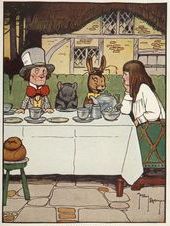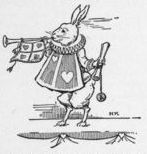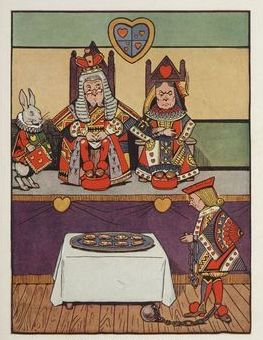On July 17 the Consumer Product Safety Commission refused to exempt or stay the coverage of crystals, rhinestones and glass beads under the Consumer Product Safety Improvement Act of 2008. Although lead has long been an ingredient in the manufacture of all true crystals, most rhinestones and many glass beads, there seems to be a dearth of actual real-life instances of children contracting lead poisoning from licking, chewing or swallowing these baubles, apparently because the lead in question, unlike lead in metallic form or in paint pigments, is bound to other substances and not “biologically available”.  “Even if you have it in stomach acids for weeks it does not come out,” said Michael Gale, director of the Fashion Jewelry Trade Association, in one recent story. Gale’s trade group had petitioned (PDF) for the regulatory relief. (Earlier background in our March 7 and Feb. 25 posts).
“Even if you have it in stomach acids for weeks it does not come out,” said Michael Gale, director of the Fashion Jewelry Trade Association, in one recent story. Gale’s trade group had petitioned (PDF) for the regulatory relief. (Earlier background in our March 7 and Feb. 25 posts).
To a large extent the Commission’s hands were tied (PDF) by the absolutist, not to say fanatical, prescription of CPSIA itself, which directs that exemptions be turned down if they could lead to “any” — not “infinitesimal”, not “too small to worry about” — absorption of lead or public health risk. This point was recognized by both the commission’s career staff (PDF: “the staff would have recommended that the Commission not consider the product to be a hazardous substance to be regulated under the FHSA”) and by its three commissioners (Tenenbaum, Moore, Nord statements). CPSC Chairwoman Inez Tenenbaum, a Democrat, noted that the law “does not allow for the consideration of risk”. So it doesn’t matter that other jurisdictions, like Europe or California, may regulate this topic in a more realistic way, or that vast stocks of existing children’s clothing, from performance dance troupe outfits to 11-year-olds’ “blingwear”, will instantly be rendered worthless. It doesn’t even matter whether a kid’s health is at more risk (by way of traffic accidents) from being driven to the mall to buy a substitute garment than from going ahead and wearing the rhinestone-bedecked tiara or camisole in question (coverage: The Hill, ShopFloor, Manatt Phelps & Phillips, Rick Woldenberg, Way to Bow, Los Angeles Times).
As Commissioner Nancy Nord notes, the ban will inflict major economic losses, possibly extending to the disappearance of entire product lines, since consumers generally don’t like plastic substitutes for rhinestones as well as the real thing.  America’s costume jewelry industry is based in Rhode Island, and the Providence Journal has led with the most serious newspaper coverage (“Kids can’t wear rhinestones“) of last month’s decision, which as usual has been entirely ignored by the New York Times and various other large papers. More: Justin Katz at Rhode Island blog Anchor Rising (“So, the economy is struggling, right? Well, what better time to beginning banning products that are acknowledged to be safe and for which there’s an active market?”). For the effects of the ban on one well-known purveyor of kids’ clothes, Gymboree, see this March Washington Post report, as well as our March 23 account. Although the CPSC is making noises about concentrating its enforcement on products for kids 6 and under — a cutoff mentioned nowhere in the law — Rick Woldenberg thinks this is doomed to fail as a step toward reassuring businesses, however well-intentioned it may be, since the goods remain flatly illegal for kids 7-12.
America’s costume jewelry industry is based in Rhode Island, and the Providence Journal has led with the most serious newspaper coverage (“Kids can’t wear rhinestones“) of last month’s decision, which as usual has been entirely ignored by the New York Times and various other large papers. More: Justin Katz at Rhode Island blog Anchor Rising (“So, the economy is struggling, right? Well, what better time to beginning banning products that are acknowledged to be safe and for which there’s an active market?”). For the effects of the ban on one well-known purveyor of kids’ clothes, Gymboree, see this March Washington Post report, as well as our March 23 account. Although the CPSC is making noises about concentrating its enforcement on products for kids 6 and under — a cutoff mentioned nowhere in the law — Rick Woldenberg thinks this is doomed to fail as a step toward reassuring businesses, however well-intentioned it may be, since the goods remain flatly illegal for kids 7-12.

Hugh Hewitt (via Wood) draws a wider moral from politicians’ refusal to take responsibility for the series of disasters the law has brought about:
The refusal of Congress to move to clean up the mess it made with CPSIA also announces what will happen after Congress passes its magic wand over health care and blows up who knows what: nothing. Tough luck. Deal with it. They will all have campaigns to run which won’t want to focus on the new law’s failures and shortfalls.
At Forbes, meanwhile, Jeff Stier of the American Council on Science and Health points out that soil from the White House organic garden has higher concentrations of lead than many products banned under the new law.
PUBLIC DOMAIN IMAGES by illustrator Gordon Robinson from 1916 Samuel Gabriel & Sons reprint of Alice’s Adventures in Wonderland, courtesy ChildrensLibrary.org.

18 Comments
I’d bet good money that the politicians who wrote this law which bans lead crystal rhinestones own lead crystal goblets, from which they find it perfectly safe to drink.
No More Rhinestone Cowboys and Cowgirls?…
Few paid much attention when Congress passed, and President Bush signed the Consumer Product Safety Improvement Act in 2008. Indeed, it’s almost certain that few who supported the law had much understanding of its likely consequ……
This is for the best. Little girls shouldn’t wear costume jewelry anyhow- such geegaws might tempt otherwise virtuous 50-year-old white male Christianists into having impure thoughts.
In fact, women should be required to wear burlap sacks and cover all their skin until they are old enough to be married off to suitable husbands, who will then presumably keep them chained up in the kitchen.
When will our God-fearing elected officials get to work on THAT law?
Tekel: Any particular reason for the ‘Christianist’ slap? Henry Waxman, last time I checked, wasn’t a ‘Christianist’. Representing Hollywood in Congress, I suspect he’s not for burlap clothing, either.
As the litany of regulatory footnotes continues to flood the livelihood of American small businesses and their owners (those things the Framers envisioned would be the cornerstone of Western capitalism), there is a predictable certainty: the reality of this law’s enforcement is exactly one hundred eighty degrees away from the talking points; they say “A” and one can expect ~A to be true (that’s “not A” for those who skipped logic). Plan accordingly.
I wonder how this will affect the manufacturers of gymnastics leotards? Nearly all the competitive leo’s have crystal designs. In fact, I can’t recall any team leo’s NOT having any. Wow.
No more rhinestones? Glenn Campbell is in a lot of trouble.
[…] The prohibited sales include, by the way, resale—so every used-clothing store and used-book shop in the nation is at risk of prosecution. […]
Good.
The more hard core the enforecement, the more unreasonable the CPSC HAS to be, the sooner the idioic Congress will be forced to overturn this idioic law.
Remember this one voters. Ask your Senator or Representative at your local town hall this month. Ask them how much of this bill (the CPSIA) they read. Ask them if they intended to ban rhinestones, kids bikes and kids motorbikes. Ask them if the planned to put mom and pop wood toy makers out of business. Ask them if they intended to force the destruction of pre-1985 childrens books. When they answer no, then ask them why the didn’t READ THE STUPID BILL. Ask them why the didn’t study the text and figure out the effect PRIOR to voting on it.
Congress – what a bunch of morons.
Did the White House allow the spring Easter Egg hunt/roll to occur on soil that would qualify as forbidden under the CPSIA? Why aren’t there any lawyers out there filing lawsuits on behalf of these children who were put at risk by this activity?
One of the things about this mess is the way that so many factions have assumed that it would have no impact on them. Making toys and kids’ clothes safer? Who would be against that? But was there any effort by the professional associations related to dancing, gymnastics, ice skating, synchronized swimming etc to inform their members (teachers and coaches) about the impact of the law? Where have the young tap and ballet dancers been in protesting this bill? Where is the youtube video of an ice skating routine that features a certified safe (but ugly) costume in order to make a point.
This is a bad law that is poorly written. The folks who voted for it don’t want to admit that. My legislator is a new guy who unfortunately is in Waxman’s party. He is pretty reasonable on many things but doesn’t seem to see any problem in this law at all.
This isn’t just to keep dangerous toys off shelves (I’m doubtful this will change the amount of lead in toys from China one bit). It isn’t just about a bunch of weirdos who like out of print books. It will be about a vastly reduced number of consumer options and increased costs that are passed onto the consumer.
@no name guy
I admire your animus toward CPSIA and the legislators that voted for it, but your emphasis on “reading the bill” is misplaced. The American Public had a hysterical reaction to lead tainted Chinese toys. Our media should have, but didn’t, make clear that the contamination was according to a regulatory standard and not a scientific standard. There was lead in some paint, which paint was put on roughly 500,000 toys. First of all, paint binds strongly to plastic, and any lead would be negligible if it were to be ingested. No child was ever at risk from the the toys. Bur our highly, and expensively, educated populous jumped to an idiotic conclusion.
Based on the false premise that incidental lead is a hazard to children, our legislators passed a law to clamp down on this threat to the health of our children. Reading the law is not going to show that the lead hazard itself is bogus. This is the problem. Mrs. Murray, and her colleagues, cannot understand relative risks. Education does not work in this regard. Look at the overeducated parents who avoid vaccines. I wish I knew what could be done. Walter Olson is a voice in the wilderness for CPSIA, and Paul Offit for vaccines. But we need the intellectual power of Oprah Winfrey and the crew of 60 Minutes.
Just trying to wrap my head around all this… does this mean that crystals will be banned all together or can they still be used if the amount used is within the tested limits?
Mr. N:
I suspect that if folks were to grill their various members of the house or senate who voted for this stupid act, that you’d find that yes, they DID intend to eliminate the “meanace” of lead in Chinese toy imports (if said meanace exists or not is really irrelevant to the point I’m making – BTW, I agree with the gist of your post that the whole lead scare is a phantom meanace).
What I suspect you wouldn’t find is an intent by most of those who voted for CPSIA to do all the collatral damage that has been documented here on Overlawyered – banning the sale of pre-1985 childrens books, rhinestones, kiddie sized motorcycles and the rest. It was supposed to be about lead in toys, period. That collatral damage was caused by a very poorly drafted act, that no one read, that no one thought about and was passed in a hurry so they could say they were doing SOMETHING.
See a parallel with certain things that are going on in Congress currently? I do. Big fat bills, with hundreds or thousands of pages, passed in a hurry since their overarching ‘goals’ sound plausible if you don’t think too hard, and no one takes the time to sit down and really understand the consequences of the details.
A careful reading and study of the bill would have revealed all the effects were seeing today, prior to passage and with full understanding of the effects. But hey, why expect our legislators to actually understand what they’re voting on. To do so would be to expect them to actually work and be able to think through the consequenses of their actions.
>Bow maker> Does this mean that crystals will be banned altogether or can they still be used if the amount used is within the tested limits?
Things that resemble crystal but are below the lead limits — which in practice basically seems to mean certain plastic and glass imitations — remain lawful to sell for children’s use.
[…] Rhinestones: We were sad to see the ruling on rhinestones that pretty much has outlawed all childrens crystal bling products. (Sidenote: We didn’t carry many of these products because most were too stereotyping for our philosophy, but there were a few designs that we actually carried and felt were a great alternative to the girly girly bling everywhere. ) With this ruling, the “bling” products that are left just don’t have the same shine, glitter, or well “bling” effect. It’s quite a disappointment to the many manufacturers and retailers who know these products don’t realistically pose a risk to children. This is in light of our new Director of the CPSC, Inez Tenebaum, upholding the law as written. Such a bitter disappointment and SO frustrating that the CSPC won’t utilize risk based assessments in enforcing this absurd law. There have been many great articles detailling the loss of glitter for children as companies try to struggle to come up with alternatives. See more articles here, here, here, and a great summary here. […]
As i know, the low lead(lead free) rhinestone for children garment and accessories are available in China. So, this law will affect the manufacturers in China only in short period. But still no manufacturer produce lead free glass beads until now as most of the galss beads manufacturers are on the edge of collapse now, they don’t have any exact money to invest for new items.
If anybody need lead free rhinestone, you could ask your suppliers to search them from China Guangzhou Chong Tai garment and accessories markets, most of factories for lead free rhinestones have office there.
Zero level of lead is really irrational. There is a joke but it’s fact that, in China, even water from the water pill contains lead around 20 to 30ppm. Lead is from everywhere now, even blood from human body contains small amount of lead too…Ban lead? have to ban yourselves too.
Oh, forget one thing, don’t drink mineral water, because it contains lead too.
Actually, 90 ppm is really difficult to control. If there is a rhinestone contains 80ppm, and you send it to different Lab. companies to test, you will find that there is a deviation for 30 to 50ppm, some lab. company may get the result for 70ppm and it passed, but some of them many get the result for 120ppm and you found that failed.
Besides, many factories bought the gun to test the lead contains for rhinestones, it’s good for 600ppm, but it’s almost unless for 90ppm, almost definately not accruate.
I think to keep the CPSIA lead content level in 300ppm is more appropriate, don’t further lowered, otherwise, it will be a hazard. Not because rhinestone manufacturers cannot produce it, but how to have the test result is a big problem. Now, to get a lead test result from Hong Kong SGS take around 10 working days, that means two weeks waste for production. If it failed, another two weeks…….